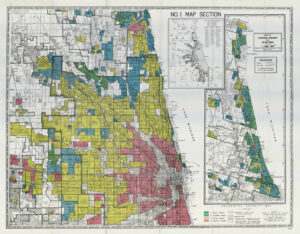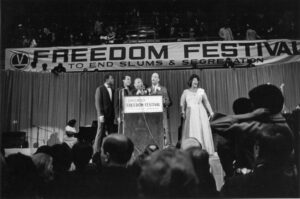Throughout life, there are moments that, indeed, take us higher. One such moment – the Texas Rangers securing their first World Series Championship this week. A team that so many counted out, standing alone as the standard for baseball around the world. For the countless fans who have followed this team through thick and thin, drops and whiffs, and everything in-between, this achievement is more than just a sports victory; it’s a testament to the unwavering human spirit and the ties that bind generations. And with this, I can’t help but think about how proud my Ma would be.
Fond Memories with “Ma”
My Grandmother, Mintha Doris Sumner, affectionately known as “Ma”, was an avid sports enthusiast. I can vividly recall the countless hours we spent watching Mavs, Cowboys, and Rangers games together. She was a force to be reckoned with. You couldn’t tell her she was not the coach. She expected nothing less than excellence from the athletes on the screen. The only exception to her unwavering commitment was Dirk Nowitzki, who she adored. Rarely – even when that dude messed up – did she get upset with him. Oh, and Jose Canseco. She LOVED her some Jose Conseco – ball bouncing off his head and all. But I digress…
As I sat in the stands at Globe Life Field on Wednesday evening, I couldn’t help but think about all these moments with Ma. And as the fireworks shot off after the Sborz called 3rd strike, I had a bit of a mist in my eye. I was transported back to Ma’s living room where we watched so many games – all the ups and downs. I was transported to the various dollar hot-dog nights we went to at the old stadium. In the moment, I was reminded that this game was really about so much more. So many core memories. So many lessons that sports teach us.
A Legacy of Strength and Selflessness
When I think about Ma, I find solace in these vivid memories, knowing that her legacy lives on through our lives. It’s a testament to the beautiful story that the Lord painted with her life. A life that was anything but easy.
Her life was not without challenges, and she faced them with unwavering strength. Losing Grandaddy, the love of her life, shortly after they were supposed to embark on a journey to enjoy the fruits of their hard work was a heart-wrenching blow. Yet, she continued to serve her beloved Itasca community, from volunteering at the church to delivering meals on wheels, always there for those in need.
A decade later, her life took another devastating and unexpected turn when she had to care for my mother, Beverly Jan Whitfield, who was fighting a cancer that proved to be incurable. Ma’s life shifted from the quiet streets of Itasca to the bustling metro of Downtown Houston to be by her daughter’s side every step of the way. Despite her own heartache, she provided love, care, and unwavering support to her daughter, who left this world far too soon.
And then with the loss of my mother, Ma took on the responsibility of guiding me, a 19-year-old on the brink of going off the rails, and raising my younger brother, Michael. All of this happened less than a decade after she and Grandaddy had planned to explore the country together and enjoy their hard-earned retirement. Her life had taken a dramatically different course.
Lessons from Life’s Challenges
Ma’s love was a selfless love, passionately committed to the well-being of others, born not of emotions but of choice. She never judged or condemned me, even when I faltered. Instead, she saw the best in me, believed in me, and offered a safe harbor in the tumultuous seas of the times. I often wonder how different my life would have been without Ma’s presence. That thought frightens me. Ma’s love, her pride in us, and her selfless spirit are the most significant gifts she left behind. They form a legacy that cannot be diminished or lost, ensuring that she continues to live on in our lives.
Celebration – Life and Sport
As I watched the Texas Rangers celebrate becoming World Series Champions, I could feel her presence. I could imagine her jubilation. Their ability to overcome, echoed the spirit of Ma. I’m reminded that that sorts often mimic life, and it’s more than just a game. It’s about enduring and triumphing through the challenges that come our way. Ma’s legacy taught me that, even in the face of adversity, we can lean into love – a love that believes in the best, endures through all trials, and asks for nothing in return.
Ma, we thank you for your humor, compassion, wisdom, patience, and, above all, your unwavering love. Your legacy is a testament to a life well-lived, and we can only imagine the celebration that’s taking place in Heaven. You are our joy, and we rejoice in honoring your memory. Your love continues to live on in each of us, and for that, we are forever grateful.
Go Rangers!



